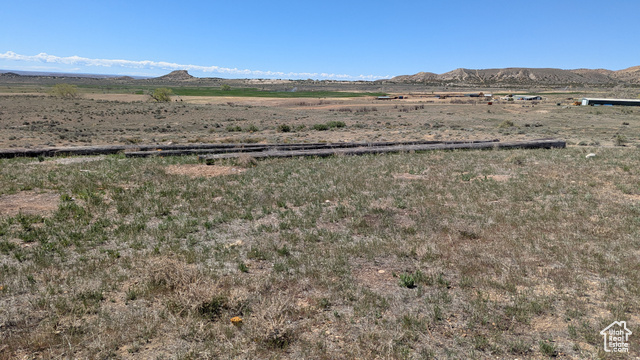The kitchen is often called the heart of the home, and for good reason. It’s where families gather, guests linger, and meals bring people together. But if your kitchen looks dated or has small problems that linger, it can quietly pull down your home’s value.
A strong, well-maintained roof is one of the most important features of any home. It protects your interior from the elements and contributes to the structure’s energy efficiency, safety, and long-term value. Without regular maintenance, minor issues can quietly develop into major problems, resulting in costly repairs or early replacement. That’s why knowing how to care for your roof properly is a smart move for every homeowner.
Whether your roof is brand new or decades old, consistent attention can extend its lifespan significantly. From inspecting for damage to cleaning debris and maintaining surrounding structures, these maintenance tasks ensure your home remains protected throughout the seasons.
Inspect the Roof Twice a Year
Regular inspections are the first line of defense against roofing issues. Aim to inspect your roof at least twice a year, once in the spring and once in the fall. These seasons are ideal since they follow extreme weather patterns like summer heat and winter storms. During your inspection, look for missing or broken shingles, cracked flashing, moss buildup, and sagging sections.
You don’t necessarily need to climb up for a full inspection. A pair of binoculars can help you scan from the ground safely. Check for discoloration or water stains on ceilings or in the attic. These might be early signs of a leak that began on the roof’s surface.
Clean Debris and Check Gutters
Leaves, twigs, and other organic matter can accumulate on your roof if trees are nearby. If not removed, this debris retains moisture, which leads to rot or mold growth. Make it a habit to clean your roof surface after heavy storms or at the end of each season.
Gutters and downspouts play a key role in roof health too. If they’re clogged, water can back up under your shingles, causing leaks. Remove leaves and buildup from your gutters, and flush them with water to confirm proper drainage. Look for signs of rust or sagging, which can impact performance during rainstorms.
Hire Professionals for Annual Checkups
Even diligent homeowners can miss potential roof concerns. That’s why bringing in a professional for an annual inspection is highly recommended.
A qualified roofer will examine your shingles, flashing, gutters, and ventilation thoroughly, identifying issues you may overlook. If you’re uncertain about doing maintenance yourself, connecting with a local roofing company is the best solution. They can handle inspections, cleaning, and minor repairs quickly, ensuring your roof remains in excellent condition and protecting your home for years to come. A solid relationship with a trusted roofer makes it easier to respond to damage after major storms.
Address Minor Repairs Promptly
Small issues such as a few lifted shingles or a patch of worn flashing may not seem urgent. But ignoring them allows moisture to penetrate the roof deck and insulation, leading to much bigger concerns. If a recent storm has blown shingles off, replace them right away.
Flashing around vents, chimneys, and skylights is another area prone to wear. If you spot cracks or gaps, resealing them with roofing cement or replacing the flashing can prevent water intrusion. Keeping up with minor repairs stops small problems from becoming emergencies.
Trim Surrounding Tree Limbs
Overhanging branches may seem harmless, but they pose a major threat during windy conditions. A falling limb can puncture your roof or dislodge a large number of shingles. Even branches that gently brush the surface cause damage by scraping away protective granules.
Trimming trees regularly reduces these risks. It also limits the amount of leaves and debris that collect on your roof and in your gutters. If the tree is very large or close to power lines, it’s best to hire a professional tree service to handle the trimming safely.
Watch for Signs of Algae or Moss
In humid climates or shaded areas, you may notice green or black streaks on your roof. These are often algae or moss colonies that thrive in moisture-rich environments. While they may not look severe, they can gradually deteriorate shingles and weaken the roof’s ability to shed water.
You can treat these areas with a cleaning solution made specifically for roofs. Avoid using a pressure washer, as this can damage shingles. To prevent regrowth, install zinc or copper strips near the ridge, which will release minerals that discourage moss from forming again.
Ensure Proper Attic Ventilation
Ventilation is an often-overlooked factor in roof maintenance. A poorly ventilated attic traps warm, moist air, which leads to condensation under the roof deck. This can cause wood rot, mildew, and insulation breakdown. During summer months, poor ventilation traps heat and raises cooling costs.
Make sure soffit vents and ridge vents are clear of insulation or debris. You should feel airflow in the attic when you inspect it on a breezy day. If temperatures in your attic are significantly higher than the rest of your home, consult a contractor to improve airflow and reduce moisture risks.
Check After Major Weather Events
After a strong storm, wind gusts or hail may damage your roof even if there are no obvious leaks. Shingles can be loosened or cracked, and flashing may be bent out of place. These vulnerabilities might not result in immediate damage, but will become weak spots in the next weather cycle.
It’s a good idea to walk your property and look for fallen branches, displaced shingles, or granules around downspouts. These signs indicate your roof has taken a hit. If you’re unsure of the extent of the damage, calling in a professional assessment is a smart move.
Keeping your roof in top shape is one of the smartest long-term investments you can make in your home. Whether you're checking for missing shingles, cleaning out gutters, or inspecting attic ventilation, these small efforts help avoid bigger expenses down the road. Preventive care reduces the risk of leaks, structural damage, and interior issues that can arise from neglected roofing systems. With regular inspections and occasional help from professionals, your roof can last longer and perform better year-round. When your roof is strong, your entire home benefits from the peace of mind that comes with solid protection.












